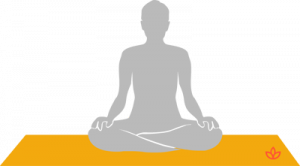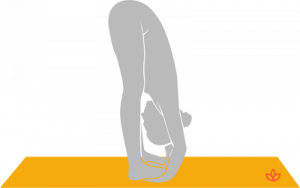[lwptoc]
How Yoga Helps in De-Stress Cryptocurrency Traders
When you could lose 30% of your investment in a single day, stress seems unavoidable. This one-of-a-kind asset necessitates one-of-a-kind fortitude. Yoga comes to your rescue!
The 24-hour cycle of cryptocurrencies can be stressful, according to Jim Smigiel, CIO of absolute return strategies at SEI Investments Co. “You can’t check your phone every five minutes with other speculative investments, like private equity and venture capital,” he says. “You can track the minute-by-minute value of it” with cryptocurrencies.
“Always looking at something with such high volatility is not conducive to an investor’s mental health,” Smigiel said.
Why is crypto trading stressful?
When your money is at stake, you suddenly check the prices more than you check social media, you obsess over the charts, and your dreams are filled with candlesticks and Elliot Waves.
Oh, and there are no breaks. Stock day traders may be Red Bull-pounding stress-monsters from 9:30 a.m. to 4:00 p.m. Monday through Friday, but they are forced to unwind when the market closes. Cryptocurrency is always on.
Crypto is a fantastic invention that isn’t going away anytime soon. Sure, cryptocurrency will change the course of humanity, but it’s still fine to be in it for the money. Cryptocurrency is stressful.
You could simply buy BTC and hold it until Kingdom comes, as Michael Saylor did, but if you are a regular reader of this sub, you are most likely not it. You most likely have some backups and are always on the lookout for good opportunities.
Also, Read: Only one of India’s leading Cryptocurrency Exchange has not faced any issue in INR deposits
I need to keep track of my alts, make sure no black swan events are happening with any of them, look for FUD and FOMO, compare it to other coins to make sure I’m not making a lot of bad decisions, and so on.
According to researchers, cryptocurrency traders are experiencing emotions similar to stock market traders during major bubbles and busts. Traders experienced effects ranging from temporary sadness to anxiety and panic disorders during the “down” times.
Here’s how to stay calm while riding the cryptocurrency roller coaster:
How Exercise and Yoga help you to de-stress?
Yoga has been shown in numerous studies to help regulate blood glucose levels, improve muscle-skeletal ailments, moderate the nervous system, and regulate the cardiovascular system. The pace is steady and slow, and the poses are simple.
Stretching, body poses, controlled breathing, focused attention, mental awareness, and the meditative process are all elements of Kundalini yoga that work directly on physical vitality and increased consciousness.
Try incorporating this slowing-down practice into your asanas. Every hour, take a few slow, deliberate breaths. Every day, you could speak more mindfully and slowly for a few minutes. Every day, eat one meal slowly.
Small steps, please. Allow slowing down to calm you down, and notice how you can appreciate life more when you take the time to do so. Yoga happens when we take the time to be present in our practices as well as in our lives.
Yoga Poses which can help you achieve mental stability and de-stress during the hectic Intra-Day Trading and Market Volatility:
You Can Learn How-To These Poses from Yogapedia.Com
One session of Yoga to trade crypto without stress
The basic technique is to stretch and focus on holding various postures while controlling your breathing. As you move through poses with names like cobra, archer, or cat-cow that require balance and concentration, you will be drawn away from ruminating thoughts and worries.
Keeping your attention on your body and breath provides a much-needed break for your linear brain. It is possible to leave a session with a calmer mind, a lighter feeling, refreshed, and clear-headed.
A new study at New York University Grossman School of Medicine about Yoga and De-stress
But how effective is yoga in improving mental health, particularly in reducing generalized anxiety disorder (GAD), a condition characterized by persistent nervousness and worry? GAD is a common, incapacitating, and undertreated disorder.
Although many patients with GAD seek complementary and alternative interventions, including yoga, there is a lack of data supporting yoga’s efficacy or how it compares to first-line treatments such as cognitive-behavioral therapy (CBT)—a therapeutic approach that helps patients identify and reframe negative thinking.
A new study at New York University’s Grossman School of Medicine assigned 226 adults with GAD to one of three study groups at random. The study’s goal was to see if Kundalini yoga (93 participants) and CBT (90 participants) are more effective than a control group that included stress education (43 participants) and if yoga is as effective as CBT for the treatment of GAD.
The 12-week intervention showed that yoga significantly reduces GAD in adults after three months. Stress education was more effective in groups that received either Kundalini yoga or CBT treatment, but CBT was more effective than Kundalini yoga.
In the yoga group, 54% met response criteria for significantly improved symptoms, compared to 33% in the stress-education group. 71% of those who received CBT met these symptom improvement criteria. The researchers concluded that, while yoga is effective for GAD, CBT is still the gold standard treatment.
The implication of this study for yoga
GAD is a common condition that affects 6.8 million adults, or 3.1% of the U.S. population, each year, according to the Anxiety And Depression Association Of America. People suffering from GAD may be overly concerned about money, careers, or other issues prone to crypto traders in the long run.
When there is no obvious cause for concern, the disorder causes unwarranted concern. Unfortunately, many patients are unwilling or unable to access evidence-based treatments, and many adults are unwilling to take medications to treat the disorder.
The new study adds to the scientific evidence that the popular, widely available, and low-cost practice of yoga may be beneficial in the treatment of anxiety in adults. And, with regular practice, it may be able to alleviate work-related stress.
“Our findings demonstrate that yoga, which is safe and widely available, can improve symptoms for some people with this disorder and could be a valuable tool in an overall treatment plan,” says the lead researcher, Dr. Naomi Simon, professor in the Department of Psychiatry at New York University’s Langone Health.







